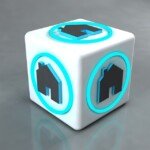Mastering 4×8 CNC Mill Building: Your Essential Guide
The 4×8 CNC mill is more than just a machine; It’s the gateway to precision, efficiency and creative freedom at scale. For workshops, factories, or even ambitious hobbyists, this workhorse device offers a compelling combination of size and functionality. But what exactly makes it indispensable, and how can you harness its power effectively? Let’s dig a little deeper.
What is a 4×8 CNC milling machine?
At the heart of the 4×8 CNC mill is a computer numerically controlled cutting machine with a 4′ x 8′ main table. This standardized size fits perfectly across the entire sheet of common board materials such as plywood, MDF, acrylic and aluminum composite panels. Guided by CAD/CAM software, high-speed spindles move precisely along the X, Y and Z axes to cut, engrave, drill, mill and engrave materials with exceptional accuracy and repeatability.
Why choose 4×8? Main applications and industries
The 4×8 footprint strikes the ideal balance:
- Best materials to use: Eliminate wasted edges by accommodating full standard paper (48×96)"), maximize production and reduce costs.
- Massive Versatility: Tackle projects that are too large for a small machine without the huge footprint and cost of an industrial-sized unit exceeding 5×10′ or 5×12′.
- Wide range of applications:
- Signage production and advertising: Large signs, channel letters, illuminated boxes.
- Carpentry and furniture: Cabinets, Doors, Architectural Millwork, Complex Panels, Custom Furniture Components.
- Plastics and Composite Materials: Acrylic displays, point of sale fixtures, composite panels.
- Lightweight metal: Aluminum sheet cutting for panels, enclosures, custom parts (requires dedicated spindle/mill).
- Prototyping and model making: Engineering prototypes, architectural models.
- Hobbyists/Educators: Large hobby projects, educational fabrication labs.
Key components and features to know
Effectively selecting or using a 4×8 router requires understanding its structure:
- Frame and gantry: backbone. Rigid steel construction minimizes vibration for increased accuracy. Moving gantry designs (gantry moves on a fixed table) are most common on 4×8.
- Spindle: The cutter’s heart. Air-cooled (common, cost-effective) and water-cooled (quieter, better for continuous use, high power) spindles in kW (e.g. 3kW, 4.5kW, 9kW). Higher power can handle harder materials and faster feeds.
- Drive system: Lead screw and rack and pinion type. For long spans such as 4×8, rack and pinion are generally faster and more durable, thus reducing "whip" and wear it.
- Linear motion: Precision guides (square or round) and bearings ensure smooth, accurate movement. The quality here directly affects cutting accuracy.
- Control system and software: brain. Specialized controllers (such as Mach3/Mach4, Centroid, WinCNC) interpret G-code from CAM software (VCarve, Fusion 360, Mastercam, etc.) and run the machine.
- Vacuum table/T-slot bed: Necessary inhibition. The vacuum table (zoning is often critical for large panels) provides excellent, even clamping of the entire surface of the panel cargo. The T-slot bed provides flexible clamping for irregular workpieces.
- Dust removal: Mandatory for health, tool life and visibility. A powerful dust collection system (5HP+) is required to handle the large amounts of chips/chips generated in large cutting areas.
Material capabilities: What can it cut?
The 4×8 router excels with a variety of materials:
- Sheet goods: Plywood, MDF, particle board, OSB, melamine.
- Solid wood: Hardwood and softwood (within thickness range).
- plastic: Acrylic (PMMA), PVC, ABS, polycarbonate, HDPE, foam board (XPS).
- Sign material: ACM (Aluminum Composite Material), Coroplast, Foamed PVC.
- Composite materials: Carbon fiber panels (with special tools), fiberglass panels.
- Light metal: Aluminum plate (up to ~1/2" Reliable, requires rigid machine, slow, often requires coolant/lubrication, reinforced end mills), brass, copper (thin gauge).
- Non-metals: Foam for modeling/packaging.
For tips: Material performance depends heavily on machine rigidity, spindle power and correct tool selection.
Advantages of using a 4×8 CNC mill
- Unparalleled efficiency: Dramatically reduce production time for high-volume or series production. No need for manual measurements or complicated fixtures.
- Extremely high accuracy and repeatability: Consistently achieve tolerances as low as thousandths of an inch on the same parts.
- Complexity made simple: Produce intricate designs, 3D reliefs and intricate joinery that would not be possible with manual methods.
- Material optimization: Nest parts tightly across the sheet to significantly reduce waste.
- Scalability: Ideal for moving from hobby/low-volume production to high-volume production without upgrading to larger equipment.
- Reduce labor intensity: Less physical effort and skill is required than hand-held milling or sawing of large panels.
Key considerations before investing or outsourcing
- Floor space and power: These are large machines (usually over 12 feet long). Ensure adequate floor space and a strong power supply (240V single phase/three phase).
- Rigidity is king: Avoid using fragile frames. Rigidity equals accuracy, surface finish quality and tool life. Industrial grade routers are best suited for demanding tasks or metal.
- Spindle power and cooling: Match spindle power to target material. Water cooling is great for long periods of high power operation. Consider an automatic tool changer (ATC) for complex jobs.
- Software stack: Consider the cost and learning curve of CAD/CAM software and machine controller software. Training is crucial.
- Dust removal: Never underestimate this requirement. Consider cost and space when choosing a powerful dust collector.
- maintain: Regular cleaning, lubrication and calibration are critical to maintaining accuracy.
- Outsourcing: For many people, working with a professional CNC service company like GreatLight is more practical than owning and maintaining such machinery.
Why partner with GreatLight for your 4×8 CNC needs?
At GreatLight, we don’t just run the machines; we run the machines. We design sophisticated solutions. Our state-of-the-art manufacturing facility houses a state-of-the-art 4×8 CNC milling machine and advanced 5-axis machining center, staffed by expert engineers and machinists. When you choose us, you will benefit from:
- Industrial Grade Rigidity and Precision: Our machines provide exceptional precision and flawless surface finish on large panel projects and complex contours.
- Material mastery: Expertise in cutting complex designs in wood, plastics, composites and prefabricated metal using optimized feeds, speeds and tool paths.
- Comprehensive arrangement: In addition to precision cutting, we offer comprehensive post-processing services (sanding, painting, anodizing, powder coating, assembly) for truly custom components.
- High-volume and superior prototyping: Whether you need 100s of identical cabinet parts or a one-off architectural masterpiece, we deliver quality, speed and efficiency.
- Competitive pricing and quick turnaround: Thanks to our efficiency and scale, we deliver excellent value without compromising on quality, often offering fast production times.
For projects requiring 4×8 scale precision—from architectural elements and signage to complex prototypes and functional components—GreatLight transforms your digital designs into tangible perfection. We can handle the technical complexities to ensure your large format CNC needs are met reliably and professionally.
Conclusion: Unleash your big vision
The 4×8 CNC mill is a transformative tool that enables creators and manufacturers to tackle ambitious projects with unprecedented speed, precision and efficiency. Whether you invest in a platform for your own store or leverage the expertise and capabilities of a specialized partner like GreatLight, mastering the platform will open up new possibilities for manufacturing. By understanding its features, components, and key considerations, you can navigate the world of large-format CNC machining with confidence and bring your greatest ideas to life with stunning precision and professional quality.
FAQ: Answers to your 4×8 CNC Milling Machine Questions
Q1: How much does a 4×8 CNC milling machine cost?
A: Prices vary greatly:
- Enthusiast/entry level: $10,000-$20,000 (may lack rigidity for heavy use).
- Professional/Industrial: $25,000-$60,000+ (stronger frame, better spindle, rack and pinion drive).
- Quality Industry: $70,000 – $150,000+ (high rigidity, high power spindle, automatic tool changer, advanced control device).
- Outsourcing: The cost depends entirely on the complexity, materials and volume of the project. With GreatLight, you pay per project, with no capital investment or overhead.
Q2: Can the 4×8 CNC mill cut metal?
one: Yes, but with important caveats. Rigid industrial machines can cut thin aluminum sheets (up to ~0.5"), brass and copper, using specialized end mills, slower speeds/feeds, and often coolants/lubricants. Steel is generally no Works on a standard CNC mill; you’ll need a mill or fiber laser. Steel requires higher rigidity and spindle power. Discuss your metal needs with experts like GreatLight to get the right solution.
Q3: How thick of material can the 4×8 CNC mill cut?
Answer: Yes Z-axis travel Maximum thickness is specified. Most 4×8 machines range from 6" to 12"+ Z stroke. However, valid Cutting depth is limited by:
- Spindle power: Cutting deep into thick, dense hardwood requires a lot of power.
- Tool length and stiffness: Very long end mills can deflect, reducing accuracy.
- Machine rigidity: Vibration becomes a major problem in deep cuts of hard materials. Although the Z stroke may be 8"the actual single-pass depth for dense materials may be 1-2".
Q4: Do I need ATC (automatic tool changer)?
A: ATC (Automatic Tool Changing Conveyor) is great for:
- Complex projects: A job requires drill bits, end mills of different diameters and engraving heads.
- Mass production: Minimize operator downtime between tool changes.
It adds significant cost and complexity, but greatly increases productivity due to frequent tool changes.
Q5: Why choose to outsource to GreatLight instead of buying your own machine?
A: Owning a 4×8 CNC means a significant investment ($10k-$150k+), dedicated space, power upgrades, software/hardware maintenance, dust removal setup, extensive operator training, and ongoing consumable costs. Partnering with GreatLight removes these barriers:
- No capital expenditure: Just pay for your parts.
- Zero maintenance/administration fees: We handle it all.
- Expertise always available: Benefit from our experienced engineers and mechanics.
- Speed and scalability: Get immediate access to production capacity with no setup time.
- Comprehensive arrangement: Simplify your production with one-stop services.
- Best solution: We can handle jobs requiring a 4×8 router or more complex geometries on a 5-axis machine.
Q6: What format of files do I need to provide?
A: We accept standard CAD/CAM formats including .DXF, .DWG, .STEP, .IGESand .STL (for 3D). Clean, well-structured documents greatly improve turnaround time and accuracy. Our team can also assist with design for manufacturability (DFM) feedback.
Ready to turn your large-scale ideas into reality? Contact GreatLight today to get a quote and experience the precision and efficiency of professional 4×8 CNC machining and comprehensive 5-axis solutions.


















